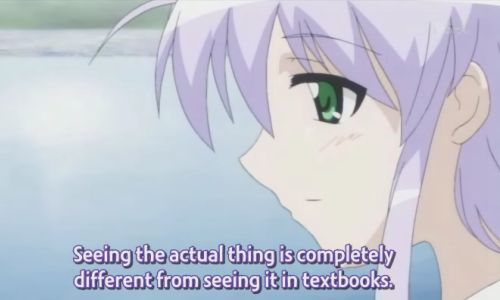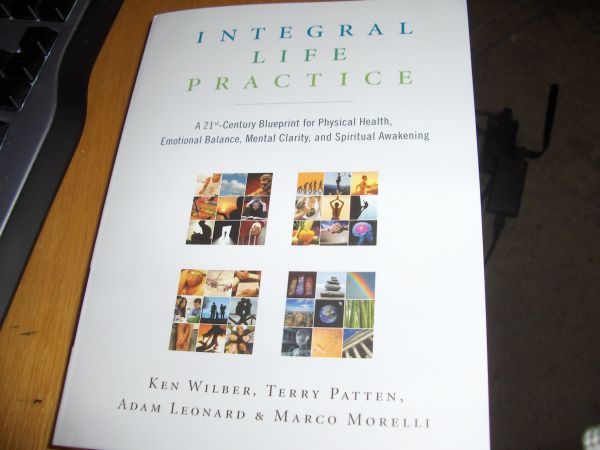
Or, as I call it, experienced reality vs measurable reality.
I am still riding the wave of vaguely New-Age self-improvement stuff. Today I think I’ll just round up some odds and ends. There is no end to the oddities in this world and especially the New Age world.
For instance, I found this blog by a guy who had bought HoloSync and decided to journal his journey of self-improvement. “Changing myself†is its name, and it consists of 7 entries an February and March 2007. Then it suddenly ends, contrary to the stated plans of the author. What happened? Did HoloSync wake the demons in the dark corner of his heart and they made him end his life in a gruesome way? Did he leave everything to join a cult? Did his premonitions about a car crash finally come true? Or did he just get bored of writing a blog, like almost everyone else? In any case, we will never know the truth about HoloSync, or at least not from him.
Speaking of HoloSync, their constantly active founder and director Bill Harris is constantly trying to make the world a better place and sell HoloSync at the same time. For instance in “The Blog That Ate Mind Chatterâ€, he has an entry named “It’s all about awareness…â€, a statement that sounds pretty close to what I’ve been talking about lately. Of course it leads to a glowing recommendation of his own product, but then again would he bother selling it if he did not believe in it? Well, perhaps if he was some kind of snake oil salesman. There is anyway a lot in this article that will be of interest even if you don’t hack your brainwaves. His revelation is eerily similar to the one I received around the age of 15 while reading a small tract by the Norwegian mystic Elias Aslaksen. At that time I suddenly realized that what happened to me was less important than my own reaction to it. And that’s the message Harris brings here too, except his is more about feeling good than doing good. There is a “hidden step†between what happens to us and how we feel. That step is our own inner constructs.
Harris also explains by example of small children how awareness grows from almost nothing in the beginning of our life and becomes stronger and stronger, giving us more and more choice. He claims that this process can continue as long as we live. Is this so, or does the increase in awareness simply follow from the maturing nervous system? Seriously, there is a great difference in the brain of a newborn baby and an older child. Not only in size, but in how connected the different parts are. In adults, new connections don’t happen automatically. I am not even sure (as Harris seems to be) that new connections will happen automatically if you listen to binaural beats every day. At some point, I think the connections that take place in “software†become more important than those that happen in “hardwareâ€. You can’t listen yourself to Enlightenment.
The disciples of Ken Wilber agree. (Wilber himself has only overseen the writing of Integral Life Practice, not actually written any of the chapters. Still, I think we can say it is written in his spirit, more or less.) On the topic of “mind machines†and such, ILP only mentions these technological solutions briefly and in the same breath as mind-altering drugs. These are fine to use if you can do so legally and harmlessly, but they must be used in addition to and not instead of a traditional practice such as meditation.
Of course, ILP has its own weirdness. I’ve made my way through the various thoughts about physical training and nutrition, and come to the part where the Subtle Body is described in more detail. Chakras and meridians and auras oh my! I know this may be unfair coming from someone who lets an invisible friend tell him when the pasta is cooked, but I keep translating “subtle body†as “fantasy bodyâ€. Chakras and auras are great for ninja anime, but I would not entrust my health to them. That is not to put down the exercises that are supposed to strengthen the Subtle Body, such as yoga or Tai Chi. I am sure both the breathing, the postures and the focused intentions are good for the health. I just think they work by a slightly different mechanism than the ancient traditions believe.
For instance, I recently read of a study showing that patients with headache responded equally well to acupuncture that was genuine but had nothing to do with headache. Now, I am sure there are numerous studies that show the exact opposite. Why? Because unlike drugs, you cannot easily do “double-blind†tests with acupuncture. You have to either use an acupuncturist or a traditional doctor, for the simple reason that stabbing people wildly with needles is dangerous, illegal and unethical. And despite their best intentions, the acupuncturists and the doctors would send unconscious messages to the patients through their posture, their tone of voice, their expression of confidence (or not) and any number of other subtle clues. Subtle bodies indeed! So depending on who did the study, the outcome would confirm what they already knew to be true.
All this underscores the difference between measurable reality and experienced reality. Science is traditionally all about measurable reality, but if you want a truly encompassing system of knowledge (as the Integral movement strives for), you have to make room for experience. We do this in daily life: As I seem to say every few days, we still speak and act as if the sun really rises in the morning, even though we know it is the earth that rotates. To take another example that you may not know so well, the colors “brown†and “orange†are actually the same, except for context. If you get to look at any one of them through a cylinder that shows only the painted area and nothing else, brown looks like orange. Seriously, I have tried (with the roll in the center of household paper towels). And in Japan, green and blue are the same color. People can tell the difference when seeing them side by side, of course, but not from memory. This is not a biological difference but a linguistic one, but it affects memory in most people.
Well, that should be enough for one day! And in any case, the day is over.






 Proof that I have at least unpacked it!
Proof that I have at least unpacked it!